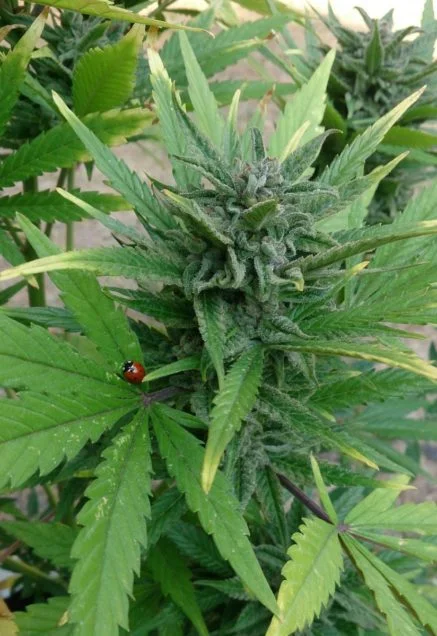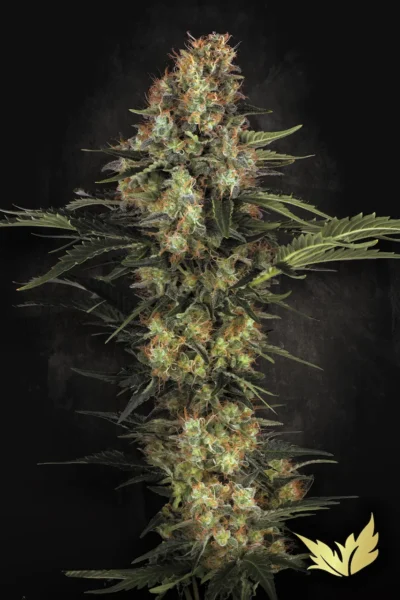This article looks at the history of the White Widow strain. In the world of cannabis there are some strains which have earned their place as legacy weed strains and this is one weed plant which has been significantly influential in the development of the cannabis seed industry.
Is the White Widow strain sativa or indica?
White Widow is a down the middle 50/50 hybrid (50% indica/50% sativa). Take a look in the Paradise Seeds collection and you will see you can buy ‘Original White Widow IBL’ cannabis seeds. Paradise isn’t the only seedbank to carry this legacy cannabis strain, but the legitimacy of this particular cannabis seed can be seen in its ‘IBL’ tag. What does IBL stand for? It refers to an In-Bred Line, meaning that the ancestry of this White Widow strain can be traced all the way back to the original plant. Paradise was gifted a pair of White Widow plants back in 1996 – a female and a male clone – from the legendary Dutch cannabis breeder, Ingemar. This was just a year after White Widow cannabis seeds had been released onto the market and caused a huge sensation amongst the cannabis growing community.

Why is the original White Widow strain famous?
Paradise Seeds used genetics from Ingemar’s White Widow plants as building blocks for several of its strains before deciding to release the strain as ‘a gift’ to all the growers and breeders out there. So what makes the White Widow strain so special? Well, when this it was first released in 1995 it was a total game changer because of its incredible grow performance, balance between indica and sativa (it’s a down the middle 50/50 hybrid) and a potency that quickly won over the cannabis growing community. This strain was the first in a line of ‘White’ cannabis strains (such as White Shark and White Rhino) which are characterized by their heavy trichome cover.
-
€35.50 – €96.50 Select options This product has multiple variants. The options may be chosen on the product page
Who is Ingemar, the ‘Father of White Widow’?
A Dutch cultivator and an early pioneer in the breeding of cannabis, Ingemar started growing weed in the 1980s. He was also an early advocate for medical cannabis and provided patients free medical cannabis throughout the period that he was perfecting the White Widow strain. He claimed to only use fertilizers he had made himself and was a big fan of cultivating outdoors in order to acclimatise strains to the harsh weed growing conditions faced in the Netherlands. Perhaps this explains why Original White Widow IBL has excellent resistance qualities, particularly against mold. In an interview with Grow Magazine in the early 2000s Ingemar revealed that it took 6 years to stabilize White Widow which was a cross between two seeds he found in ‘hand rolled’ hash.
What is the White Widow Effect?
The genetics of this popular plant are listed as being a cross between a Brazilian female sativa landrace plant and a hybrid father from Kerala (a state in South India), although Ingemar always held the true origins close to his chest. Euphoric, energizing and stimulating are frequently used adjectives to describe the effect, but it is the White Widow strain’s appearance which really captured the imagination back in the day and continues to inspire awe even now. In the same Grow magazine interview, Ingemar confirmed that the ’Widow’ in the name refers to the poisonous spider (Black Widow), while the ‘White’ referred to the extremity of the crystalline trichome cover on the buds.
Original White Widow IBL cannabis seeds is a popular purchase choice for growers. For some it hits a nostalgic note, while for many it is just the superb all round performance of this plant – from its easy growth management to its much publicized effect – which makes it so appealing still after all these years. To see what it is made of, check out the White Widow grow report.



